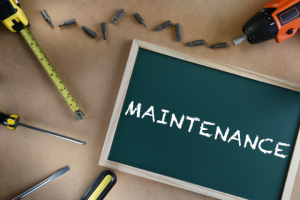
In many fluid power applications, predictive maintenance is a more accurate way to prevent failures than traditional, preventative maintenance strategies. In this article, we look at the comparative benefits of predictive maintenance vs planned maintenance, and which strategy could work best in your application.
What Is Predictive Maintenance?
Predictive maintenance uses sensors and analytic software to monitor the performance and condition of machines in real time, in order to anticipate potential maintenance issues before they occur. By tracking a variety of data points such as temperature, vibration, and power consumption, predictive maintenance can identify both critical faults and operational inefficiencies – enabling proactive repairs and system improvements to save money and boost productivity.
This process has numerous benefits for fluid power system operators, including:
- Cost savings from avoiding unnecessary repairs and replacements,
- Reduced risk of unscheduled downtime,
- Improved planning efficiency for when to take machines offline for repair,
- Easier troubleshooting with access to more data about potential problems,
- More efficient service calls, with service personnel arriving onsite with the correct parts and tools knowing what needs to be repaired or replaced.
Let’s Explore These Benefits In More Detail:
Benefits Of Preventing Unnecessary Replacements Or Repairs
One of the most obvious benefits of implementing predictive maintenance is the cost efficiencies to be gained from avoiding needless repairs and replacements. With predictive maintenance technologies in place, engineers can detect any potential signs of wear-and-tear on their hydraulic machines before it becomes serious enough to cause a fault. This allows them to intervene quickly and make necessary adjustments or replacements at much lower costs than they would otherwise have incurred if they waited until the problem caused full machine breakdowns or required the complete replacement of one or more components.
Predictive maintenance gives maintenance engineers better insight into the right time to take their machines offline for repair or replacement, thus allowing them to plan ahead rather than having unexpected downtime due to mechanical failures.
Benefits Of Easier Troubleshooting With Predictive Maintenance
Another benefit of predictive maintenance is that it provides engineers with access to more data about potential problems with their machines and fluid power systems. This data resource can be used by technicians to diagnose the exact cause of an issue much faster than traditional methods, without as much trial and error, leading to quicker resolutions and less downtime overall.
For example, instead of manually inspecting each part individually looking for signs of wear-and-tear or damage – as in preventative maintenance – technicians can use predictive analytics technology to identify which parts are experiencing increased friction or heat levels that may indicate an emerging problem, and when it is most likely to occur.
Benefits Of More Efficient Service Calls With Predictive Maintenance
Through access to real-time predictive maintenance data, service engineers can arrive onsite already equipped with the correct parts and tools needed for any repairs or replacements that need done on a machine without wasting time trying various diagnostic tests first to figure out what needs fixing. This makes service calls much more time efficient and cost effective overall as technicians don’t have to spend time sourcing products and materials, which can often add one or more additional days of downtime to a standard repair.
Find Out More
For engineers looking to increase performance in their fluid power systems while reducing the costs arising from repairs and downtime, predictive analytics offers a cost-effective solution compared with traditional planned or preventative maintenance. To find out more, please contact one of our hydraulic design specialists today on 01353 721704.
Image Source: Canva


